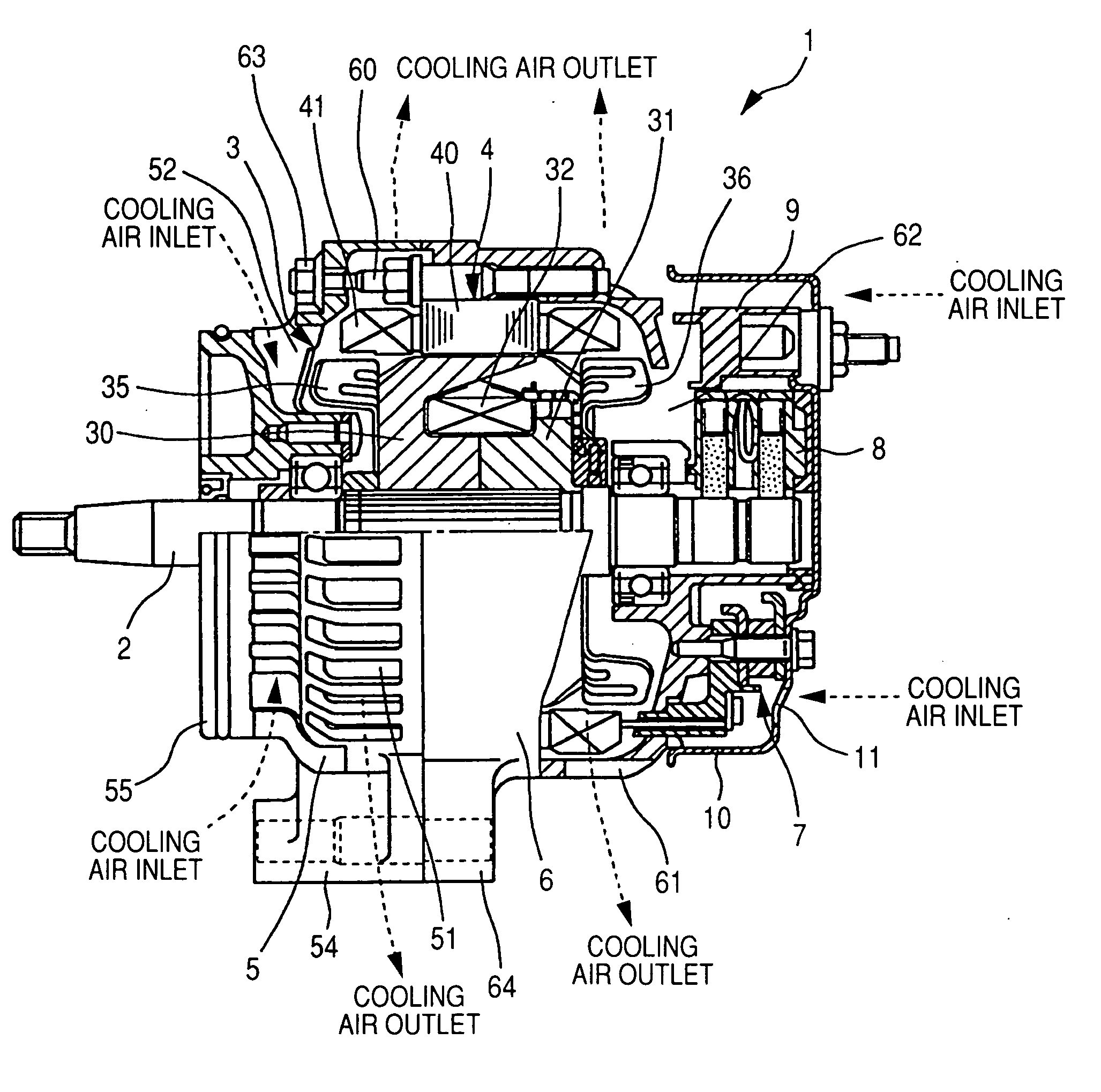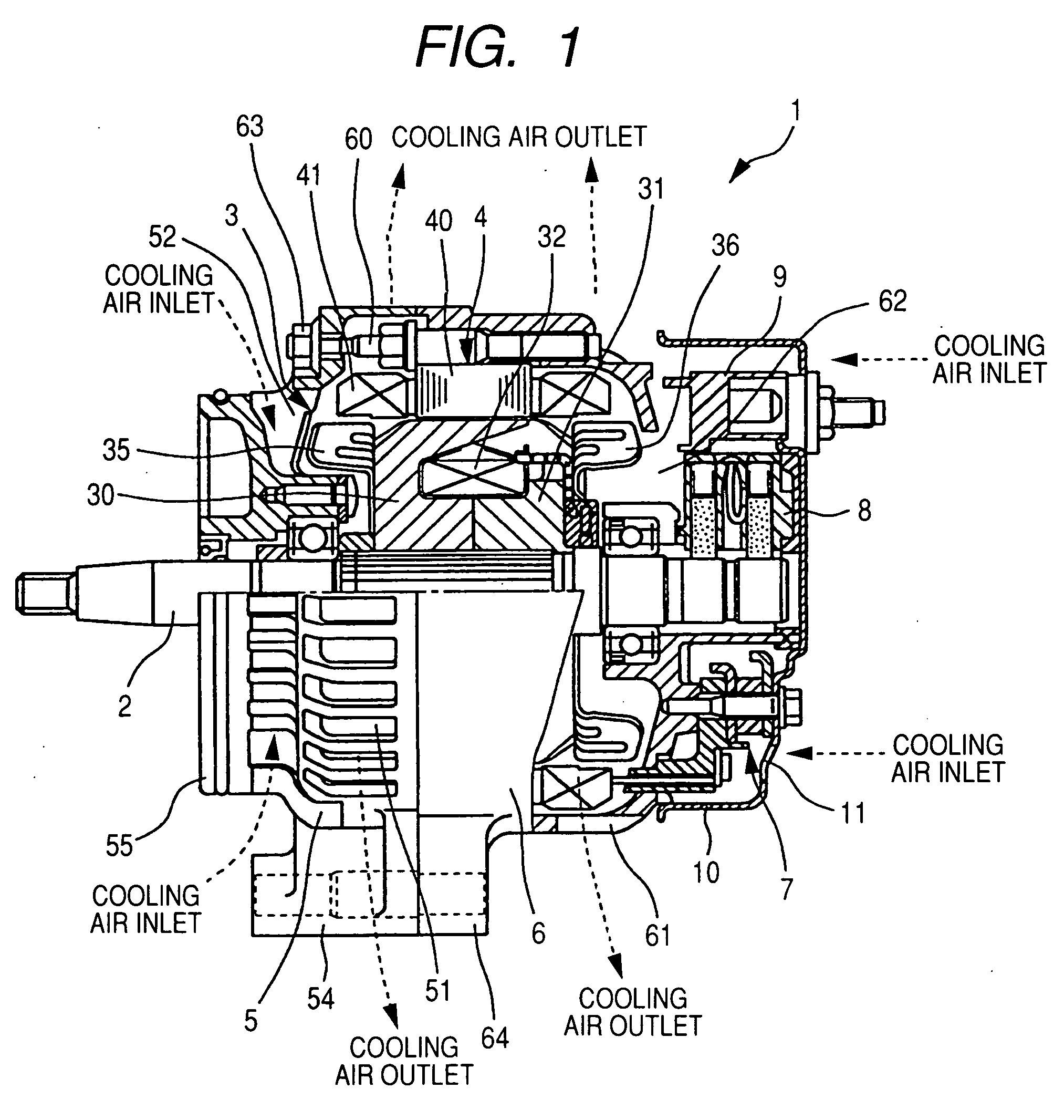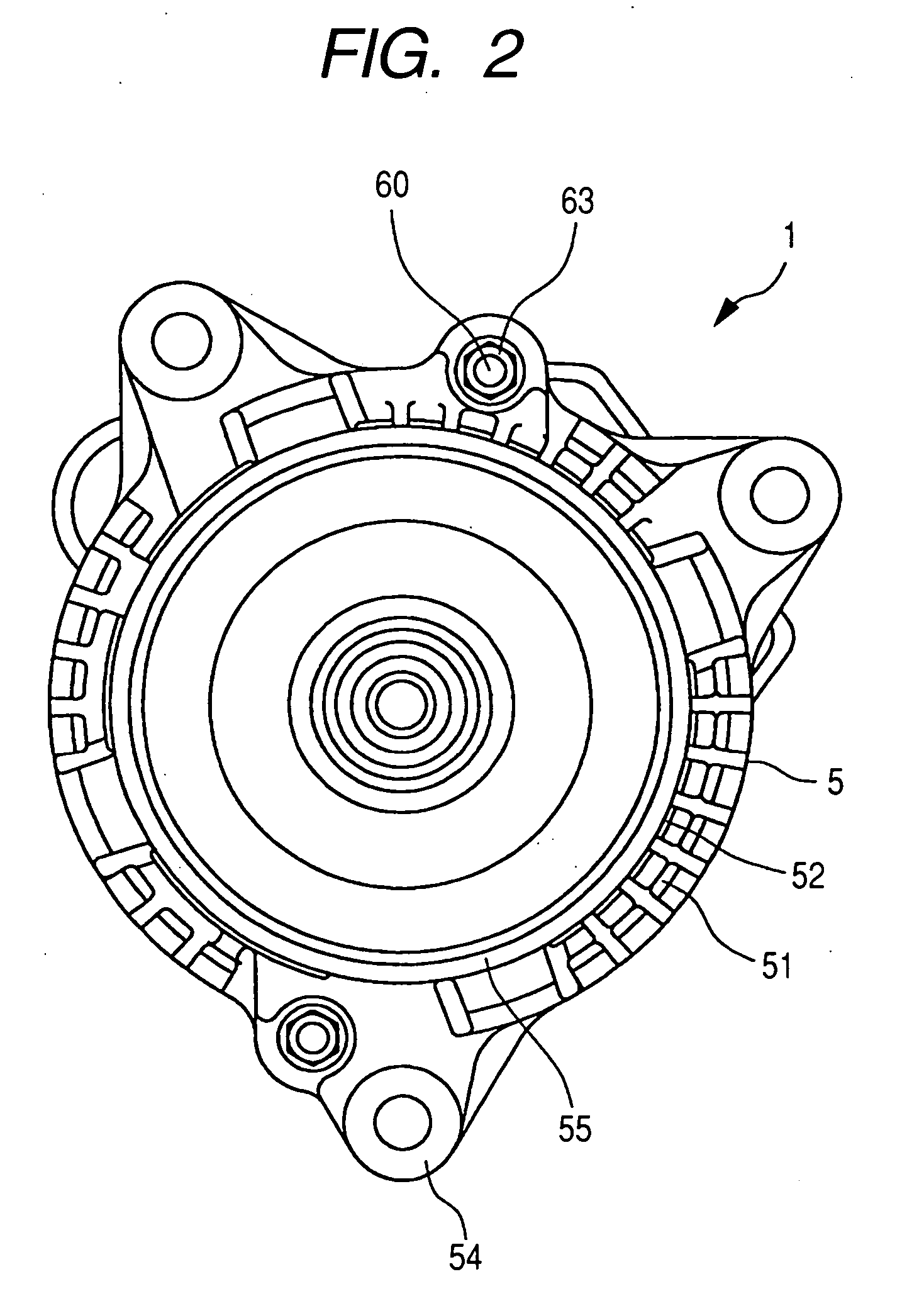Cooling system for vehicle alternator
a technology for vehicle alternators and cooling systems, which is applied in the direction of electrical equipment, dynamo-electric machines, electrical components, etc., can solve the problems of reducing the life of electric components and mechanical components forming the alternator, reducing the output power of the alternator, and reducing the cooling capacity. , to achieve the effect of enhancing the cooling capacity, preventing accumulation of foreign matter, and improving the cooling capacity
- Summary
- Abstract
- Description
- Claims
- Application Information
AI Technical Summary
Benefits of technology
Problems solved by technology
Method used
Image
Examples
embodiment
[0023] A description will be given of the configuration of the cooling system for a vehicle alternator according to the first embodiment of the present invention with reference to diagrams.
[0024]FIG. 1 is a sectional view showing an entire configuration of the vehicle alternator equipped with the cooling system to be mounted on a motor bicycle as a vehicle according to the first embodiment of the present invention. FIG. 2 is a plan view of the alternator equipped with the cooling system and FIG. 3 is a rear view of the alternator equipped with the cooling system.
[0025] As shown in FIG. 1, the vehicle alternator 1 (or referred to as “an alternator”, simply) has a rotary shaft 2, a rotor 3, a stator 4, a front frame 5, a rear frame 6, a rectifier unit 7, a brush unit 8, a regulator 9 as a voltage control unit, and the like. A front part of the rotary shaft 2 is engaged with a gear 102 as an engine side driving component placed in the engine block 100 in order to receive the output p...
PUM
 Login to View More
Login to View More Abstract
Description
Claims
Application Information
 Login to View More
Login to View More - R&D
- Intellectual Property
- Life Sciences
- Materials
- Tech Scout
- Unparalleled Data Quality
- Higher Quality Content
- 60% Fewer Hallucinations
Browse by: Latest US Patents, China's latest patents, Technical Efficacy Thesaurus, Application Domain, Technology Topic, Popular Technical Reports.
© 2025 PatSnap. All rights reserved.Legal|Privacy policy|Modern Slavery Act Transparency Statement|Sitemap|About US| Contact US: help@patsnap.com



